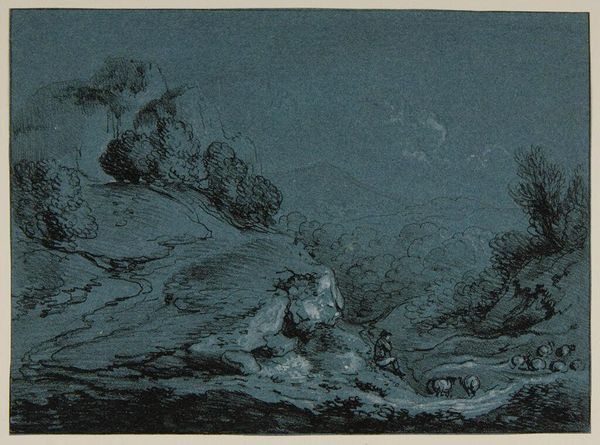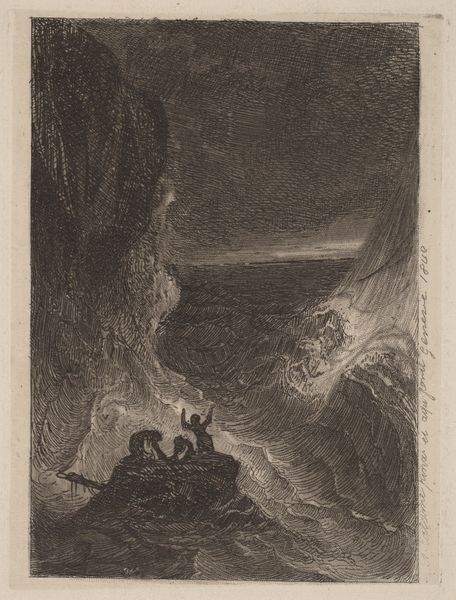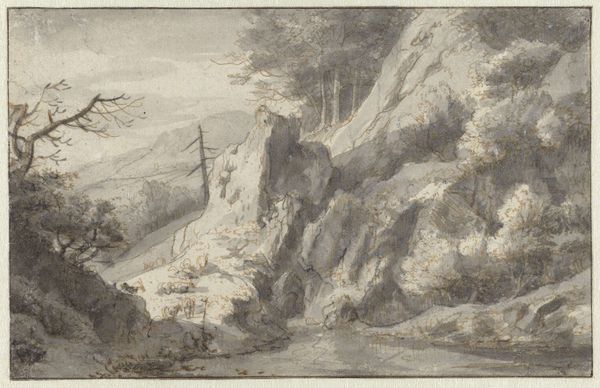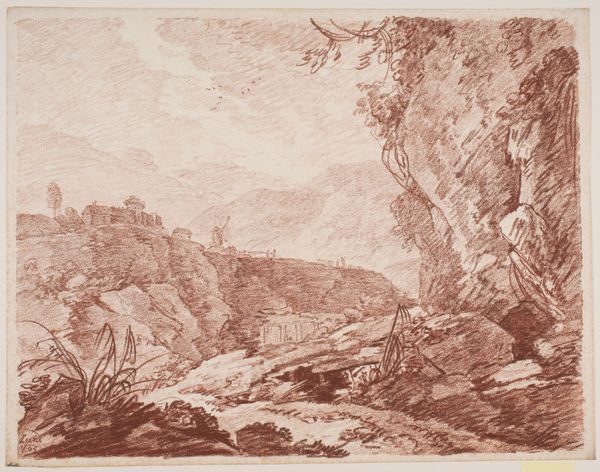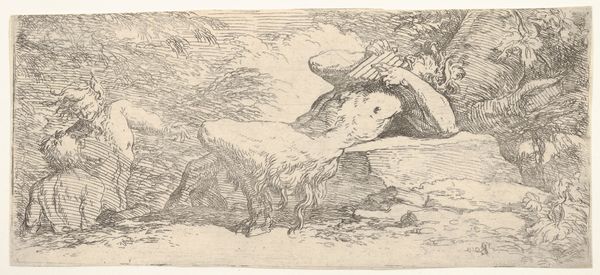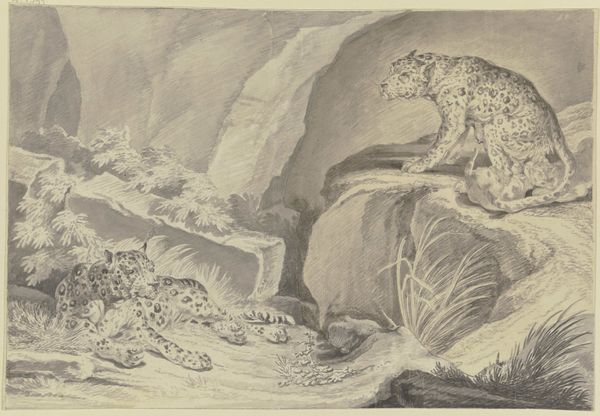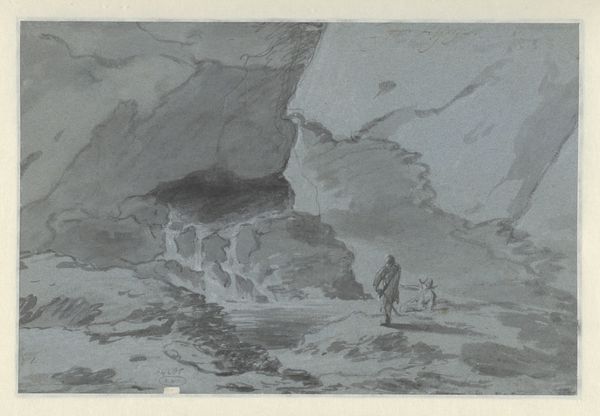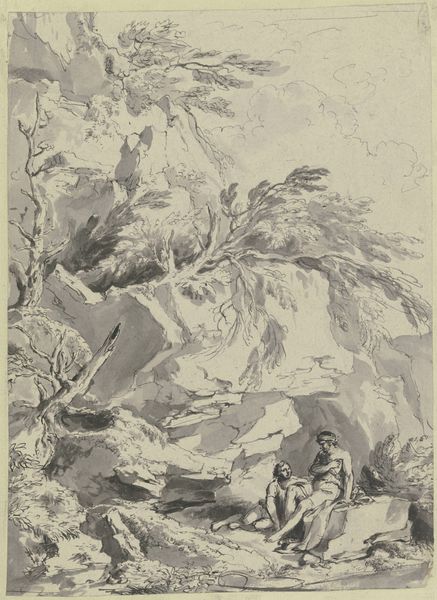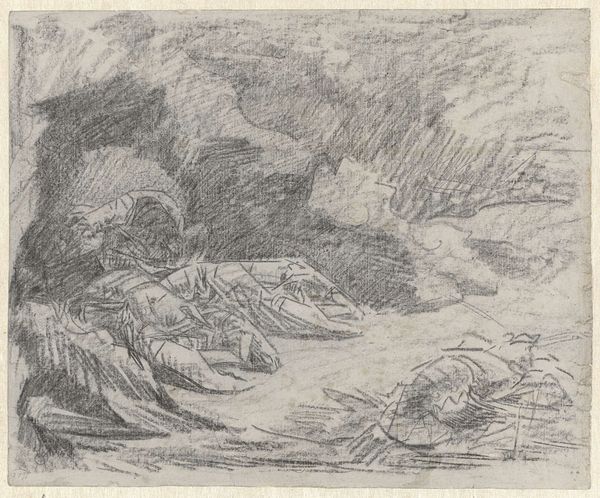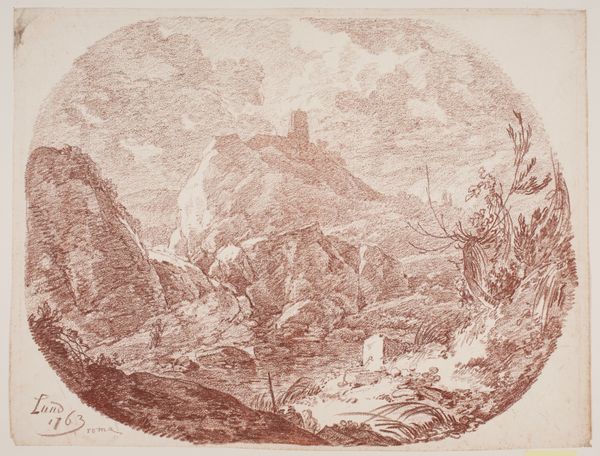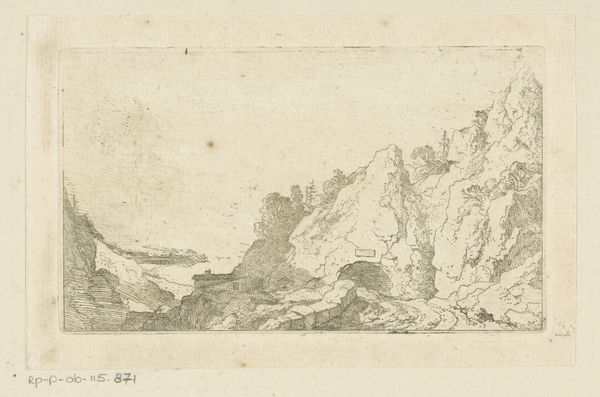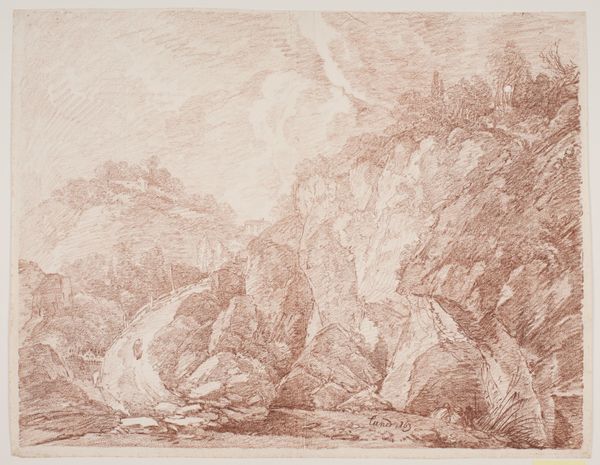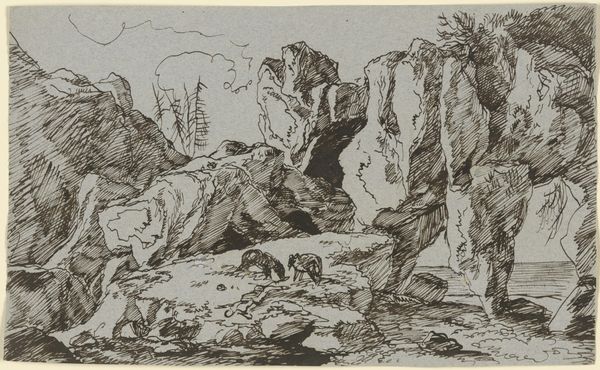
drawing, pencil
#
drawing
#
narrative-art
#
landscape
#
figuration
#
romanticism
#
pencil
Dimensions: Sheet: 7 3/8 x 10 1/4 in. (18.7 x 26 cm)
Copyright: Public Domain
Curator: This is "Landscape", a drawing attributed to Thomas Gainsborough, dating somewhere between 1750 and 1899. It resides here at The Metropolitan Museum of Art. Editor: It’s incredibly evocative! A very subdued and quiet composition in pencil; immediately I am drawn into a dreamy sort of vista. Curator: Dreamy is right. Gainsborough's handling of pencil here elevates what might be considered a sketch into something far more atmospheric. Consider the layers—the visible chalky foundation onto which the trees and figures are added, almost as afterthoughts. How does this relate to Gainsborough's engagement with social change? Editor: Well, we see a departure from idealized landscapes and more of a focus on rural life; that small group tending livestock grounds us. Gainsborough, born into a family involved in the cloth trade, may be using landscape to explore the raw materials, if you will, of rural existence. Was this work commissioned? It feels so immediate. Curator: Unfortunately, provenance details are scant, so pinpointing the social circumstances is difficult. However, consider the broader cultural appetite for these types of scenes. These weren't mere topographic studies but actively engaged with notions of pastoralism, romanticizing agricultural life. Editor: The hazy almost industrial quality really intrigues me too. Perhaps in an odd way hinting at urbanization from a distance by use of what some might term dirtier material of pencil/chalk drawing as opposed to a cleaner landscape painting using oil paints. Curator: Fascinating to note the choice of medium in contrast to traditional oil paintings and to point towards industrial influence through such drawing choices! Something so readily available democratizes artistic experience for artist and viewer alike. Editor: Indeed! And, as an experience, what’s fascinating to me is how a seemingly simple medium, employed in a seemingly uncomplicated manner, presents a rather potent tableau about changing times. Curator: Ultimately, "Landscape," compels us to think critically about not only the scene before us, but its potential social and historical implications during the time.
Comments
No comments
Be the first to comment and join the conversation on the ultimate creative platform.
